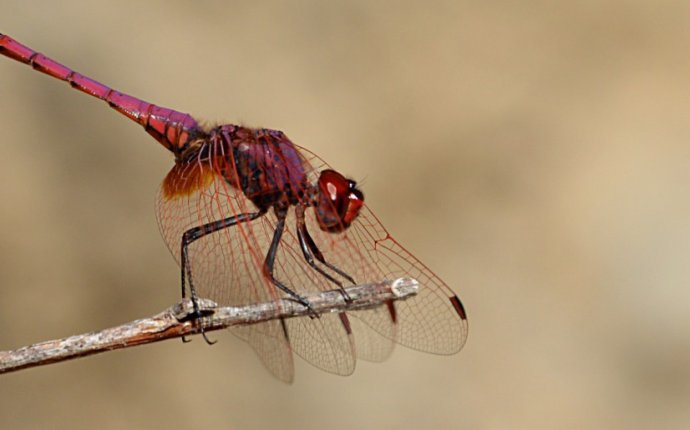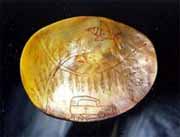
Capital of Western Australia Crossword
 The pearling industry was a major economic force for over one hundred years in northern Australia and for business interests in the southern capitals from the 1850s onwards. However, alongside the development of the industry were stories of forced and indentured labour, danger and death.
The pearling industry was a major economic force for over one hundred years in northern Australia and for business interests in the southern capitals from the 1850s onwards. However, alongside the development of the industry were stories of forced and indentured labour, danger and death.
The origins of an industry
Pearl shell Ornament. Artist unknown. Bardi people, Cape Leveque, Kimberley region, Western Australia Pearl shell, red pigment. Collected by Gerhardt Laves, 1931. Image courtesy of Macleay Museum.
Australia's pearling industry began long before European settlement. Northern Australian coastal dwelling Aborigines harvested the abundant pearl shell from the shallow waters and had a well established trading network for pearl shell. Within Australia, pearl shells travelled further perhaps than any other item. In Western Australia an explorer saw an aboriginal wearing a pearly oyster-shell which had travelled at least 500 miles from its point of origin. (Blainey, G., 1975, Triumph of the nomads: a history of ancient Australia, p. 203-204.)
Aborigines also traded with the Macassan fishermen from the Indonesian island of Sulawesi who harvested beche-de-mer, trepang (sea-slugs), tortoise and pearl shell. Folklore, songs, cave paintings and the diaries of Matthew Flinders tell us of links between Australia and Indonesia dating back 500 years with traditional visits from Indonesian fishermen continuing until the 1970s.
When Europeans settled in Australia, they were quick to see the value of the pearl fields. Pearling began in earnest at Shark Bay, Western Australia, in the 1850s and in the Torres Strait in 1868 with 16 pearling firms operating on Thursday Island in 1877.The colony of Queensland recognised the value of this resource, and annexed the islands in 1879. By 1910, nearly 400 luggers and more than 3500 people were fishing for shell in waters around Broome, then the biggest pearling centre in the world.
Pearl shell button.
Pearl shells obtained from the Torres Strait found a ready market in the clothing industry in the United States and England especially for buttons and buckles. Quick immediate profits could be made with pearl shell attracting 400 a ton in the early period and at the worst time, in 1894, 79 a ton. The Torres Strait supplied over half the world demand for pearl shell in the 1890s (Evans, Gaynor, 'Thursday Island 1878-1941', University of Queensland, p. 106). Pearl shell and 'Mother of Pearl' were the main focus of the industry as the shell was used to make buttons, cutlery, hair combs, jewellery items as well as art objects and inlay for furniture. This can be seen in the growth of James Clark's business in the Torres Strait. In 1896 his fleets had raised 31, 500 worth of shell and 5000 worth of pearls. (Royal Commission 1897)
A Pearl diver and the crew who worked with him, off the coast of Broome, around 1900. Image courtesy of the National Library of Australia.
These boom times attracted large numbers of Europeans, South Sea Islanders and Asians who came for the adventure, the promise of work and the possibility of making their fortunes although Aborigines and Islanders were valued as divers. In the Torres Strait, by 1886, there were an equal number of non-Islanders as there were Islanders. In Broome, the largest of these immigrant groups, however, were the Chinese. Not only did they come as pearlers, but also as cooks and shopkeepers, similar to the gold rush days.
In the Torres Strait, pearlers not only sought pearls but also other island resources to maintain the industry and this extended to the ransacking of the islands for food, timber, women and water. Along with the onslaught of diseases, this contributed to significant population decline amongst the Torres Strait Islanders within 30 years to as low as 50% of pre-pearling populations by 1900 (Stan Florek, Reports of the Australian Museum , 2005).
Pearl diving – a dark history
From 1862-68, local Aborigines worked 'dry shelling' without wages, collecting oysters in the shallow waters of Shark Bay. Within three years, the supply was so low that larger boats were sent out two kilometres off shore to collect oysters in deep water. Six to eight Aboriginal men and women in a boat would 'naked dive' for shell. This meant they had to dive down deep with no oxygen, no snorkel and no mask.
In the Torres Strait, employment conditions were regarded as dangerous as well as 'unspeakably squalid and dirty' and contributed to a high degree of accident and death. (John Singe, The Torres Strait: People and History, 1979) Attempts to regulate the marine industry and to prevent improper employment of Aborigines and Islanders were made by the Queensland parliament and wages were required to be paid in front of an inspector after 1893.
Aboriginal pearl divers, late 19th century. Image courtesy of the Broome Historical Society
The invention of diving suits revolutionised the pearling industry in Australia. Not only could divers go deeper than ever before, they could also stay underwater longer and collect more shell and pearls. These divers wore vulcanised canvas suits and massive bronze helmets and were lowered over the boat's side to spend hours underwater.
On the bottom they struggled about in lead-weighted boots, often almost horizontal as they peered through inch-thick faceplates into murky waters, frantically scooping oysters into bags because divers were paid by the amount of shell they collected.
(Pearling History)
As the work was very dangerous, the European boat owners employed mostly Japanese divers. Many of the Japanese divers were used as indentured labour. This means that they were working for no money in order to repay a debt, usually their transportation to Australia. Divers were paid by the amount of shell they collected and because of the dangers involved, very few of these divers ever managed to work off their debt.
Pearl divers regularly faced the threat of shark attack as well as the dreaded crippling effects of the bends with every dive. Some sources say that the mortality (death) rate for divers was 50%. In addition, whole fleets were shipwrecked in single cyclones. Between 1908 and 1935, four cyclones hit the pearling fleet at sea. Around 100 boats were destroyed and 300 men were killed.
Setbacks for the industry
In the early 20th century, Australia's White Australia Policy restricted immigration to mostly white Europeans. This was a problem for Broome and the pearling industry who relied on cheap, 'expendable' labour from Asia. As a solution to this, the government recruited 12 divers from the British Navy as pearl divers. Unfortunately, nearly all of these divers died, so Broome was made an exception to the White Australia Policy.









